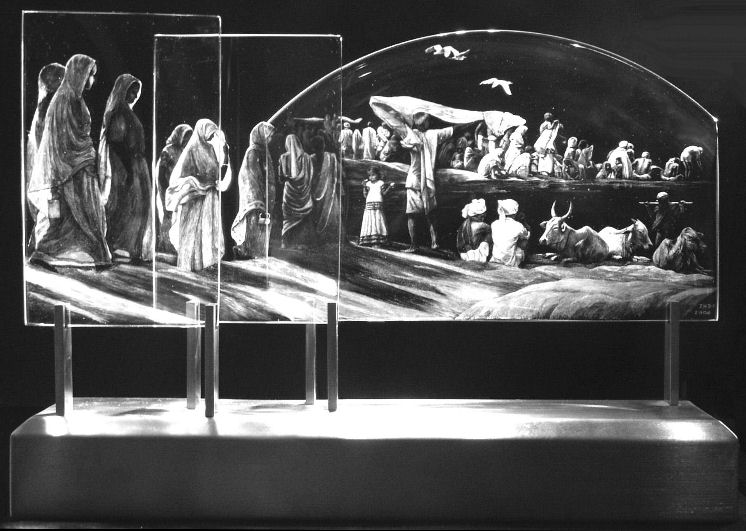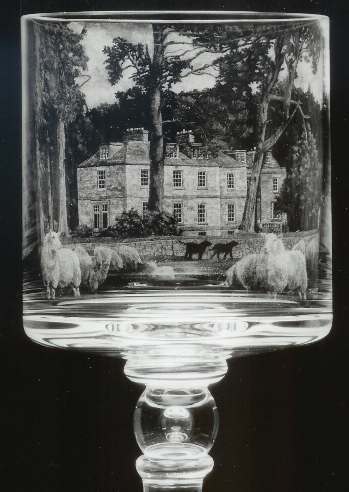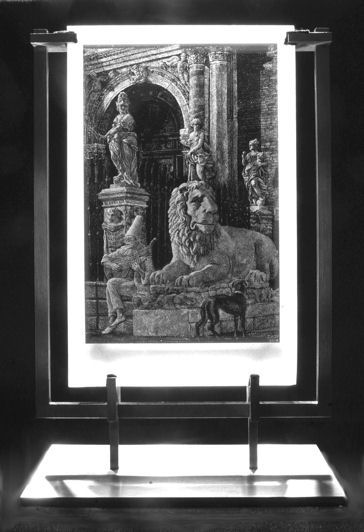Stipple engraving on glass originated in Holland in
the 18th.century, and reached its peak around 1740-1770. By 1810 it had
disappeared, but it was rediscovered in the 1930s in Great Britain, where it is
now enjoying a revival. Pictures are made up of tones created by tiny dots
scratched on the surface of the glass with a diamond or tungsten
carbide point. The more dots applied the lighter the tone achieved, the lightest
tone being where the whole surface has been removed. The half tones depend on
the dots being separated by minute areas of clear glass. Full lead crystal is
needed for this to be achieved without the surface breaking up. Because the
whole process is done by hand, without machinery or acid, it can take a month or
more to engrave a single goblet. For his larger engravings James combines
stipple engraving with drill engravinf using diamond and carburundum burrs,
as in the examples below. |

|  |
| About the Artist |
James Denison-Pender was born in London in
1942. He took up engraving as a hobby, entirely self-taught, in 1967. In 1972 he left the computer industry to make engraving
his full-time career. He joined the Guild of Glass Engravers in 1975, and was
elected a Fellow in 1980. He exhibits regularly with the Guild, and more
recently with the Scottish Glass Society, which he joined in 1996. His many
other exhibitions include Sheppard & Cooper and Asprey in London, Portraits
Inc. and Mallett in New York, The 1980 Newbury Spring Festival, Falle Fine Arts in Jersey
and Whytock & Reid in Edinburgh. A frequent visitor to Africa, he exhibited
at the 1st World Wilderness Congress in Johannesburg in 1977, and with the
African Wildlife Foundation in Washington DC. He also exhibited at The Fleming Collection in London in 2012
and with Alexander Meddowes Fine Arts in Edinburgh in 2014. He lived in Cumbria from 1974 to
1993, when he moved to Scotland.
|
| Commissioned Engravings |
An exquisite engraving by James
Denison-Pender makes an ideal gift for a wedding, special birthday or
anniversary, a presentation on retirement or corporate gift. A subject can be
chosen which is personal to, or reflects an interest or enthusiasm of the
recipient. There is a wide choice of glass - wineglasses, goblets, bowls and
blocks. Goblets and bowls can be engraved on the inside and outside surfaces
creating a magical three-dimensional effect. Every engraving is unique - no
design is ever repeated. Where an engraving is needed for a particular date, it
is advisable to give the artist about six months notice. It is a slow process
and there is nearly always a bit of a backlog. The artist will be pleased to
help with choice of subject and glass, and advise on presentation and display.
|




